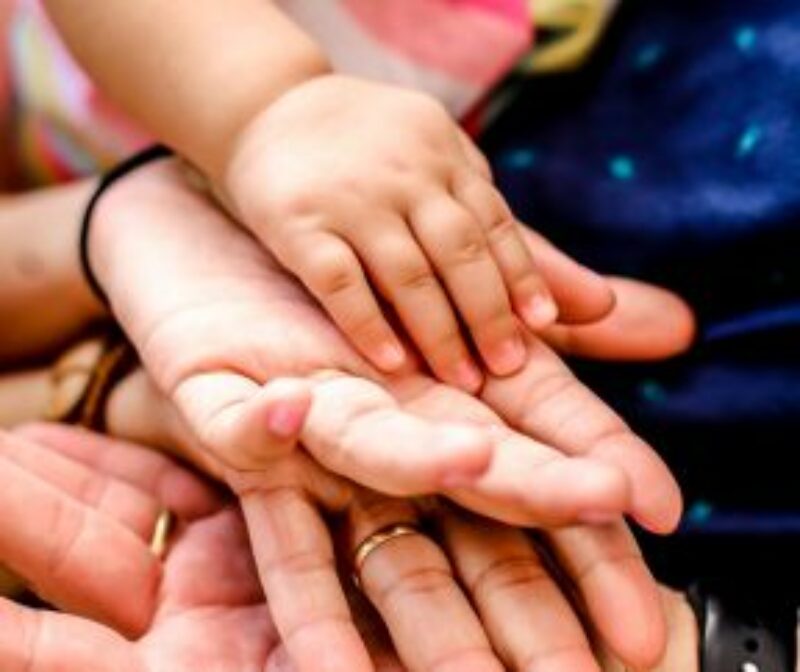As a developmental psychologist, I explore the multifaceted role of religiosity for Black youth development and health. It can buffer effects of discrimination and violence on health and wellbeing. Religious institutions also provide supportive relationships. In recent research, I showcased the bidirectional involvement of Black youth within faith settings. Not only do Black youth receive support, they actively provide support to others. When highlighting the multifaceted role of religion for youth to fellow scholars unfamiliar with my work, I often find myself explaining what so many outside of academia already know: that religious communities can, for better or for worse, shape connections to cultural heritage and to thriving.
Join me as we consider a few ways that we can all, regardless of past, present, or any religious affiliation, team up to empower youth to thrive with, through, and by faith.
Clergy and Lay Leaders
Religious settings not only provide spiritual anchors but can foster a sense of cultural belonging. For example, for Black emerging adults of Caribbean heritage, religiosity provides contact points to those who share the same language, food, and traditions. For many Black youth identifying as African American, Black Church participation affords access to educational and social programming, alongside spiritual and cultural sustenance.
Although religious communities often strive to foster strong, healthy connections with faith, youth may feel differently. Some may feel welcomed but due to cultural or religious tradition, perceive that they cannot pursue their unique callings within their communities. In addition, others may report “church hurt” or spiritual abuse, where theology and religious traditions are used to control, minimize, or silence the voices, contributions, and participation of those expressing spiritual struggles or reporting mistreatment. We can promote thriving by creating evidence-based and faith-centered strategies to notice, report, and to ameliorate the effects of mistreatment and abuse, and to cultivate safe and responsive environments. Congregations can empower youth by connecting them to tools and education to gain and strengthen advocacy and leadership skills.
Involvement with faith communities tends to decline during the transition into emerging adulthood. Although some decide to abandon their faith tradition, navigating religious identity for those desiring to remain necessitates more feedback to clarify what strengthens or diminishes faith. For some Black students, joining gospel choirs or participating in spiritual activities (e.g., reading sacred texts, watching sermons, praying) may nourish their souls while away from home. So what to do? Regional and national denominations might design anonymous surveys through which positive and negative experiences within local religious communities can be shared. Using developmental relationship models, multigenerational taskforces could harness results to generate actionable strategies that promote long-term thriving.
Parents, Caregivers, and Mentors
Invite youth to talk about their beliefs. Self-discovery and identity development are key developmental tasks. Trusted adults can support youth by encouraging them to research tough theological questions. What does thriving look like to them as they navigate faith? What spiritual practices attract them the most? What aspects discourage them? By supporting youth self-reflection, trusted adults can connect them to relevant resources and experiences that promote critical thinking, openness, and self-awareness.
Parents’ religious socialization can significantly influence youth religiosity and wellbeing. Caregivers and mentors may more effectively build rapport with youth by first thoughtfully evaluating their own religious experience during childhood and adolescence. For example: What was exciting? What pain lingers, and what healing is still needed? What spiritual practices galvanized hope? Flexible and holistic evaluations of the good, best, bad, and the ugly within caregivers’ faith may inspire new ideas for developing stronger, more responsive relationships.
Researchers
I encourage researchers to employ dynamic definitions of religiosity and thriving. In some traditions, beliefs and practices may contradict with researcher or societal ideas of what promotes wellbeing. However, some congregants’ faith experiences may be perceived as positive. For inclusivity’s sake, understanding what youth and their faith traditions consider to be undesirable or negative provides much-needed information for interpreting and connecting results to real-world interventions that these communities can use. Include the voices of youth and clergy through qualitative approaches or collaborative partnerships. Open up science by prioritizing both peer-reviewed and mainstream outlets. Embrace transdisciplinary citation – include scholars addressing similar lines of inquiry beyond your field. Lastly, researchers can expand current knowledge regarding religiosity’s connections to diverse youth thriving by consciously citing the work of experts from under-represented groups.
Clinicians and Educators
Regardless of whether connections with youth occur within faith-based or secular settings, faith will inevitably impact youth interactions. For example, for medical and mental health providers, religious beliefs may guide how youth and their families respond to treatment plans. Within some traditions, experiencing mental health struggles and seeking help can be stigmatized. Clinician-clergy partnerships might develop webinars and videos that integrate faith and address common concerns about mental health. Moreover, intake forms can include optional questions for clients to disclose their faith background. This may generate opportunities for providers to understand the ways in which religion and spirituality may intersect with (and potentially promote positive) health and wellbeing outcomes for youth.
Educators play vital roles in youth development. Nurturing cultural competence within academic settings necessitates the promotion of awareness and acceptance of religious and spiritual diversity. Some instructors include religious observance clauses in their syllabi to accommodate assignment deadlines, communicating to students that their faith identity matters. In addition, sharing information about individuals from diverse identities within particular fields can highlight key and/or overlooked contributions. Whether stepping into a classroom or logging onto Zoom, students can thrive as they learn that they do not have to leave their faith identity behind.
Undoubtedly, when it comes to the role of religion and thriving for our youth, much more remains to explore and to know, to dismantle and to build up, to restore and to make new. Let’s get to work.
Continue Exploring

Blog
Eras: What do Taylor Swift and the church have in common? (Part 1)
What can the church learn from the success of the Eras tour? Part 1 of a 3-Part Series.

Emotions
Kids and Anxious Minds (Part 1): How Parents Can Support Children Struggling with Anxiety
Student researchers recommend 3 evidence-based interventions that parents can use to help regulate kids' stress and emotions at home.

Youth
Kids and Community (Part 2): Adolescents and the Value of Loving Relationships that Display a Loving God
Why do kids need a community that models love, and what does emotional safety have to do with it. Part 2 of a 3-part series.
